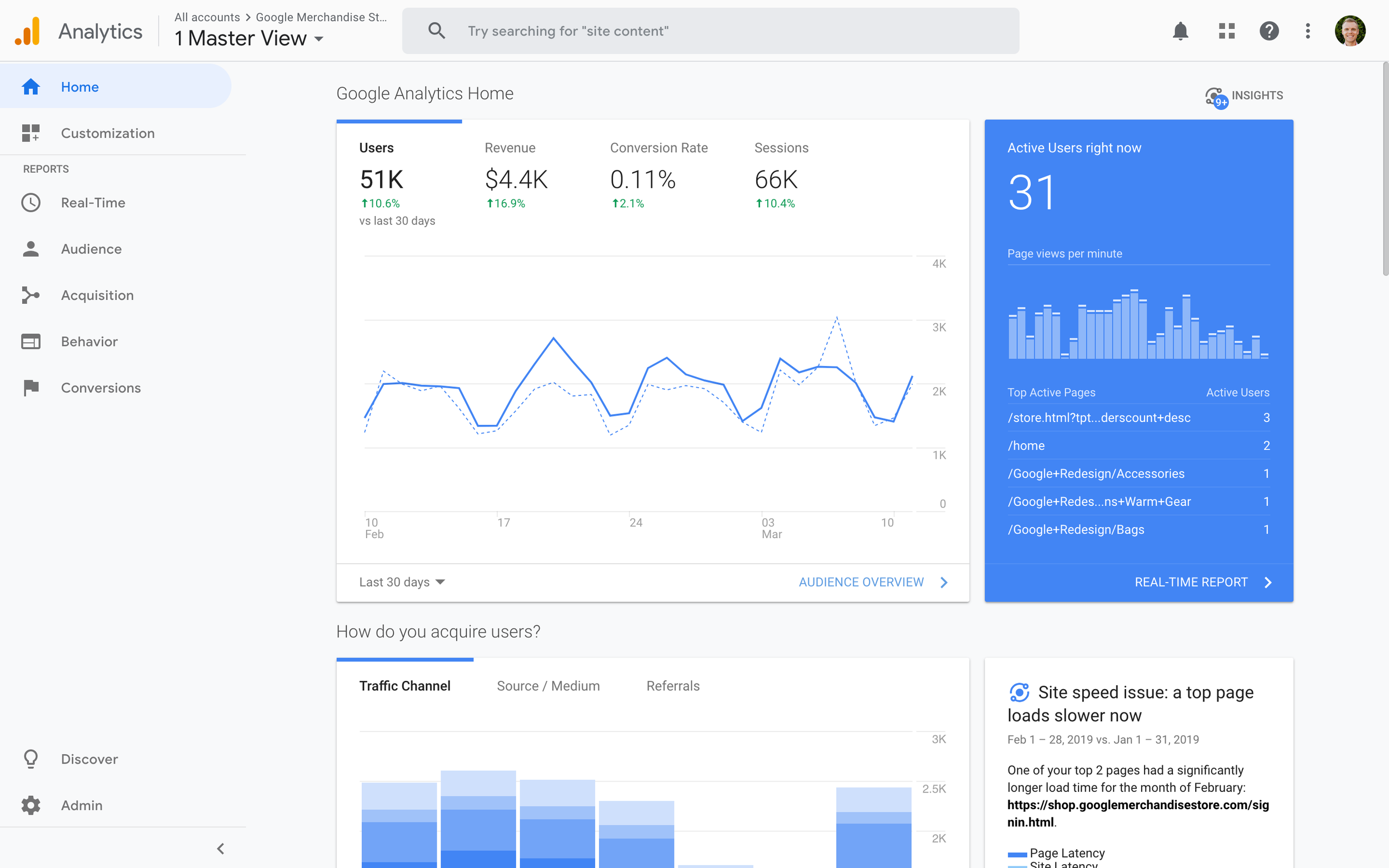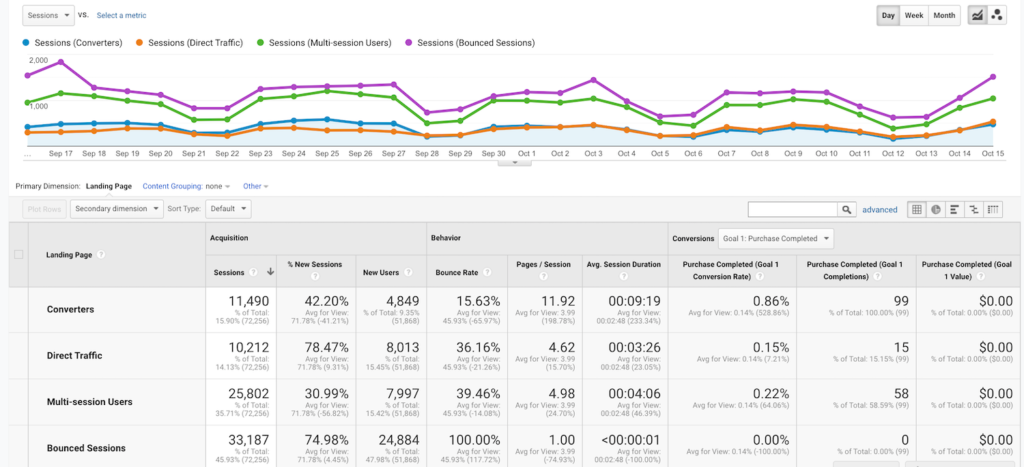What Data Is Google Analytics Goals Unable to Track: A Total Guide
Wiki Article
Discover the Limitations of Google Analytics Goals: Revealing the Data Kind That Remain Untrackable
As services progressively depend on data-driven decision-making, comprehending the limitations of tools like Google Analytics comes to be paramount. While Google Analytics Goals offer important insights into customer communications, there exist data types that avoid monitoring, posturing challenges to an extensive understanding of customer behavior. These untrackable data kinds question concerning the accuracy and efficiency of the analytics data that organizations heavily trust for their digital strategies. Curious to reveal the covert unseen areas in your data evaluation procedure?Insufficient Customer Trip Tracking
Insufficient customer trip tracking within Google Analytics can hinder the ability to precisely examine user behavior. When the individual journey is not completely tracked, there are spaces in the data that stop a comprehensive understanding of exactly how users connect with a website. This lack of understanding can lead to missed opportunities for optimization and improvements to the customer experience.One usual concern with incomplete customer journey monitoring is the lack of ability to see the full course that users take in the past completing a goal or leaving the site. Without this details, it is challenging to identify where individuals may be coming across barriers or rubbing points that prevent them from converting. Furthermore, incomplete tracking can cover the impact of particular marketing initiatives or web site adjustments on customer behavior.
To resolve this restriction, it is vital to establish correct monitoring devices within Google Analytics to record the entire user journey. This may include setting up occasion tracking, goal funnels, or making use of devices like Google Tag Supervisor to make sure that no important communications go unrecorded. By gaining a detailed view of the customer journey, web site proprietors can make more enlightened decisions to improve user involvement and drive conversions.
Acknowledgment Difficulties
Browsing via attribution challenges in Google Analytics needs a detailed understanding of how different touchpoints contribute to the overall conversion process. Attribution obstacles arise from the complexity of modern client trips, where customers interact with multiple channels prior to transforming.One usual acknowledgment obstacle is the trouble in connecting conversions to the proper resource, specifically in situations where individuals engage with several channels prior to converting. This can cause mistakes in figuring out which advertising and marketing initiatives are driving the most conversions. Additionally, cross-device monitoring postures an additional acknowledgment challenge, as users typically switch between tools throughout their journey, making it testing to track their interactions perfectly. Marketing experts have to meticulously evaluate and interpret attribution information to make enlightened decisions and optimize their advertising and marketing methods successfully.
Offline Conversions
Provided the obstacles linked with associating conversions precisely in online networks, the measurement of offline conversions offers a substantial opportunity for marketing experts looking for a more extensive understanding of their customers' trip. Offline conversions describe actions that consumers absorb the real world, such as making purchases in brick-and-mortar stores or over the phone, going to occasions, or engaging with published products - what data is google analytics goals unable to track. These conversions are important for services that operate both online and offline, as they give important understandings right into the performance of advertising projects throughout various touchpointsTracking offline conversions typically postured a substantial obstacle for online marketers, this hyperlink as it was testing to attach these actions back to specific online interactions accurately. Nonetheless, with innovations in modern technology, such as the combination of CRM systems, distinct identifiers, and promo code codes, businesses can now link the void between online and offline data to acquire an extra all natural view of consumer habits. By effectively measuring offline conversions, marketing experts can optimize their strategies, designate sources more successfully, and inevitably enhance the general client experience.
Cross-Device Tracking
Cross-device monitoring plays a crucial role in recognizing the interconnected nature of consumers' digital interactions throughout several tools. In today's omnichannel globe, where customers perfectly switch over in between desktop computers, tablets, and mobile phones, tracking their behavior across these tools is essential for online marketers to obtain a comprehensive view of their consumer journey.
Additionally, privacy concerns and guidelines such as GDPR and CCPA have additionally complex cross-device monitoring. With individuals demanding even more control over their information and increased limitations on tracking technologies, marketers have to discover privacy-compliant and innovative methods to connect user communications across devices.
Dynamic Material Engagement
Understanding user engagement with websites dynamic material is critical in optimizing electronic advertising techniques for improved audience communication. Dynamic web content describes web site elements that change based upon customer habits, preferences, or other factors, offering a personalized experience. Tracking customer interactions with dynamic web content poses obstacles for standard analytics tools like Google Analytics.While Google Analytics can track standard interactions like clicks and web page views, it might have a hard time to capture even more nuanced engagements within vibrant material. what data is google analytics goals unable to track. Metrics such as time invested in certain dynamic aspects, float actions, or interactions within pop-ups are often not conveniently measurable making use of basic monitoring methods. This limitation hinders online marketers' capacity to fully comprehend how individuals are involving with dynamic material and customize their strategies appropriately

Verdict
In conclusion, Google Analytics goals have restrictions in tracking incomplete individual trips, associating conversions properly, recording offline conversions, tracking cross-device communications, and gauging vibrant web content involvement. These restrictions highlight the value of discovering added monitoring approaches and devices to get an extra thorough understanding of customer actions and conversions past what Google Analytics can supply.While Google Analytics Goals deal useful insights into user interactions, there exist data kinds that thwart monitoring, presenting difficulties to a thorough understanding of individual habits.Incomplete individual trip tracking within Google Analytics can hinder the ability to accurately assess customer habits. When the individual journey is not totally tracked, there are voids in the data that prevent a comprehensive understanding of just how individuals communicate with a site.One usual concern with insufficient customer journey tracking is the lack of ability to see the complete path that customers take previously completing an objective or leaving the site. By acquiring an extensive sight of the individual trip, site proprietors can make even more enlightened decisions to improve user involvement and drive conversions.
Report this wiki page